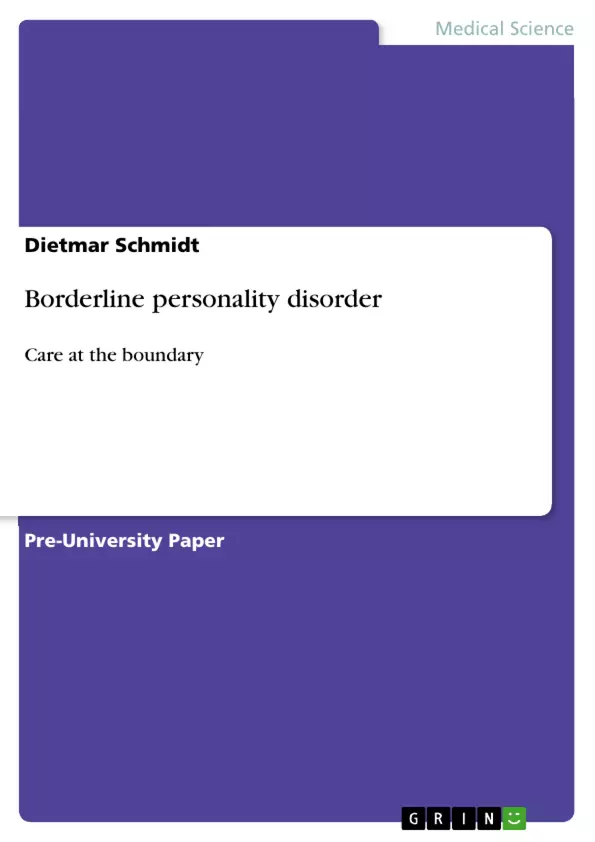The presented work describes the borderline syndrome, the diagnostic symptoms as well as nursing measures and goals, and explains them in more detail. Drug and psychological therapies were left out on purpose, because they are not directly connected with the tasks of the psychiatric nursing staff. To the lay person, the
interplay between the symptoms and diagnostics of BPS and the steps relevant for care shall get conveyed in an transparent fashion, so that the “border land” does not get lost.
Inhaltsverzeichnis (Table of Contents)
- Introduction
- The borderline personality disorder
- Definition
- Causes and clinical course
- Symptoms, care diagnoses, measures and goals
- Principles of treatment
- Case study
- Summary
- References
Zielsetzung und Themenschwerpunkte (Objectives and Key Themes)
This thesis aims to provide a comprehensive overview of borderline personality disorder (BPS) with a focus on nursing care and its practical application. It aims to shed light on the disorder for affected individuals, their relatives, and the nursing staff, promoting understanding and reducing prejudice.
- Definition and characteristics of borderline personality disorder
- Symptoms, diagnoses, nursing measures and goals for BPS patients
- Principles of treatment for borderline personality disorder
- Practical application of nursing care through a case study
- Promoting understanding and reducing prejudice surrounding mental illness
Zusammenfassung der Kapitel (Chapter Summaries)
The introduction provides an overview of the thesis's purpose and scope, highlighting the importance of understanding BPS in the context of nursing care.
Chapter 2 delves into the definition of borderline personality disorder, exploring its causes, clinical course, and the various symptoms, care diagnoses, measures, and goals associated with it. This chapter aims to provide a comprehensive understanding of the disorder from a nursing perspective.
Chapter 3 focuses on the principles of treatment for BPS, emphasizing the importance of a multidisciplinary approach. While not delving into specific therapeutic techniques, it highlights the role of nursing care in supporting patients and promoting their wellbeing.
Chapter 4 presents a case study of a 22-year-old woman hospitalized for self-injuring behavior. This chapter demonstrates the practical application of nursing care in the acute setting, outlining the necessary measures to stabilize the patient.
Schlüsselwörter (Keywords)
Borderline personality disorder (BPS), nursing care, symptoms, diagnoses, measures, goals, case study, mental illness, prejudice, understanding, treatment, stabilization.
- Quote paper
- BScN Dietmar Schmidt (Author), 2007, Borderline personality disorder, Munich, GRIN Verlag, https://www.grin.com/document/170901



